Floor Lighting Requirements
A certain number of requirements that you should familiarize yourself with:
- Illumination around the perimeter of the floor or lighting devices mounted in its plane should have a high degree of protection against water. Thus, when the cleaning will be carried out, water will not be able to get into the body of the light source and damage the current-carrying elements.
- It should be that the housings can protect the lamps and be as stable as possible and not afraid of mechanical influences. The same goes for the backlight mounted in the plinth of the floor, which can be accidentally damaged due to careless movement of furniture.
- Cases of light sources should also not heat up in such a way as this will contribute to the melting and even self-ignition of the baseboard.
- So, as mostly hidden floor lighting is used to provide a comfortable movement in the dark, soft, dim and dim light should come from the lighting devices.
- It is possible to create bright light in a room by means of tapes having a small diameter but differing in high power. For diffused light flux, low-power wide cords are suitable.
- For lighting, you need to use electrical appliances that consume a minimum amount of electricity.
In the photo, the floor lighting in the interior of the living room.
Which lights are better to use?
There are a large number of light sources. For design, both the simplest light bulbs and complex LED designs can be used.
Spotlights
For installation in a floor covering from a laminate, parquet or wood, several corresponding holes must be made. Devices can also be mounted in the plane of the wall or in a large baseboard located on one side of the room. For embedding, compact products with a small height are mainly chosen.
Floor spotlights are placed perimetrically or installed near one or two opposite walls. Mounting option is also possible when spotlights become two-sided framing of the passage.
Given the moisture resistant properties, a similar method of lighting is often used in the design of the bathroom. Spotlights on the floor will also allow you to achieve a decorative atmosphere in the interior of a bedroom or corridor.
The advantages of this lighting include a free symmetrical or asymmetric arrangement of devices, high aesthetic qualities, original performance, long service life. Lamps are reliable and in most cases are not afraid of mechanical damage and moisture.
The disadvantage of spotlights is the periodic replacement of lamps and laborious installation, which requires a thoughtful arrangement of wires so that each source is provided with energy.
In the photo there is a hall with floor lighting with spotlights near one wall.
LED strip lighting
A popular option for lighting the floor is duralight in the form of a transparent tube with LEDs or incandescent lamps.This type of lighting is characterized by a variety of color solutions, which makes it easy to choose a shade for any interior. LED duralight has a soft and calm light flux, which adequately illuminates the floor plane.
LED strip requires a special cable channel for installation and a niche in order to install a hidden power supply. Often, such a backlight is used as additional in combination with spot lighting. To simplify the task of controlling such lighting will help the remote control.
Advantages of LED strip: long service life, reliability and easy installation, which can be done with your own hands. All you need is the purchase of a power supply having the right power.
The disadvantages include high cost and the presence of standard brightness. Some people think that the light coming from LED strips is too bright and directional.
In the photo, floor lighting with a baseboard complemented by an LED strip.
Neon cord lighting
Flexible neon is very convenient, because it is suitable for installation at right angles, as well as for creating unusual luminous patterns. The neon cord looks like a sealed pvc tube, equipped with miniature neon lamps.
The advantages of lighting a floor with neon lamps is that it lasts a long time, has a wide variety of shades, emits a pleasant diffused glow that does not irritate the eyes.
The disadvantages include a high price category, fragility of bulbs and complex installation. Such floor lighting is difficult to mount on your own, so it is better to contact specialists.
The photo shows a modern living room interior with neon floor lighting in blue.
Light modules
Such lighting in the form of transparent modules, inside which there are LEDs, can differ in different configurations and sizes. It looks interesting products equipped with drawings with a 3D effect. Thanks to the filling squares, you can create an original light composition, for example, such as a chessboard or a rectangular track.
In the apartment, the modules are appropriate to use as a light rug in the design of the bathroom or hallway. This type of lighting is often equipped with a motion sensor, which allows the modules to turn on automatically.
Advantages of light modules: high resistance to damage and complete tightness.
In the photo, floor lighting in the form of light modules in the interior of the house.
Where in the apartment can I make a highlight?
Various examples of floor lighting in the interior of an apartment.
Hallway floor lighting
In the hallway they use illumination around the perimeter of the room, illuminate the tile spaces or individual segments of the floor. The installation method and type of lighting depends on the intended effect.
Floor lighting directed to the wall planes will not only add decorativeness to the interior, but also emphasize the texture of the finish. Also, due to recessed fixtures, you can correct the incorrect configuration of the room.
The photo shows the design of a spacious corridor with spotlight on the floor.
In a narrow and long corridor, light sources are appropriate to place the entire length of the room. This can be a single LED strip or a line of several spotlights.
Toilet floor lighting
In the toilet room, floor lighting acts as an original decorative addition to the main light. For registration, the use of built-in models or LED strip is suitable. Each of the options will look incomparable and bring unusualness to the interior of the toilet.
Bathroom floor lighting
Spectacular floor lighting will create a pleasant and cozy atmosphere in the bathroom. It is important to choose safe light sources that are not afraid of water and temperature changes, especially if it is supposed to be placed next to a sink or bathtub. Plastic is best suited than glass.
In the photo, the floor with spotlights located around the bathroom.
In the bathroom, which has a modest area, with the help of floor lighting you can visually increase the space. Floor lighting combines favorably with hanging fixtures. Due to this design, it is possible to enhance the soaring effect of plumbing devices and achieve a soft level of lighting, pleasant to the eye, especially at night.
In the photo, the interior of the bathroom with a podium, decorated with LED lighting.
Kitchen floors
Kitchen space is considered the most suitable place to play with the light. Light bulbs can be built on the same level with the floor plane or zoning the room, due to the illumination of the podium.
For the kitchen, the installation of durable LEDs or spotlights having a thick protective glass is appropriate.
The original design decision is to lay the floor with ceramic tiles with decor with built-in LEDs. As a rule, this option is quite expensive, so you can only get a few fragments and supplement some sections of the flooring.
In the photo, an LED strip in the design of the floor in the interior of the kitchen in a modern style.
Backlighting in the bedroom
As a decorative and functional lighting of the bedroom, LED strips, light modules or tubes on the floor under the bed are mounted.
The berth can be highlighted in white or another shade suitable for the surrounding design. The lower backlight helps to expand the space, changes the appearance of the room and adjusts its shape. Many equip floor lighting with a motion sensor. Thus, going into the bedroom or getting out of bed at night, the lamps will automatically turn on with a soft glow that does not interfere with a sleeping person.
The photo shows the design of a bedroom in an apartment with floor lighting with light modules installed under the bed.
How to make lighting in the floor plinth with your own hands?
The installation process can be easily done at home. It is only necessary to acquire the necessary tools and accessories for the installation of skirting boards and lighting products.
- To begin with, the installation area is determined, and the baseboard is adjusted to the required length. Then, several holes for fastenings are drilled through the baseboard channel in the wall plane. In the case of a wooden surface, it is better to fix the baseboard with self-tapping screws.
- After the baseboard is fixed, you need to choose a place to place the PSU and controller. To do this, a cabinet or a wall box installed nearby is suitable.
- Next, you need to measure the required length of the LED strip. To build and connect the tape to the power supply, special connecting clips are used.
- Due to the adhesive base, the backlight must be fixed in the baseboard channel and the wires to the power supply.
- Upon completion of the installation process, the cable channel is closed using a matte profile made of acrylic or a transparent strip.
Photo gallery
Correctly installed lighting of the floor is able to give the room volume, hide the imperfections of the room and emphasize its advantages, as well as bring some mystery and magic to the atmosphere.

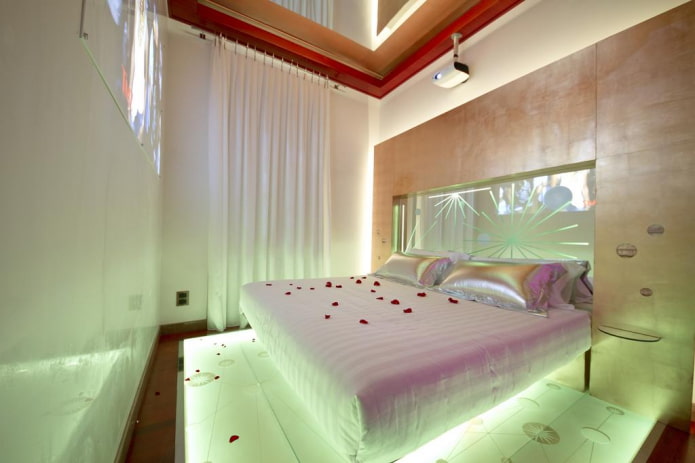
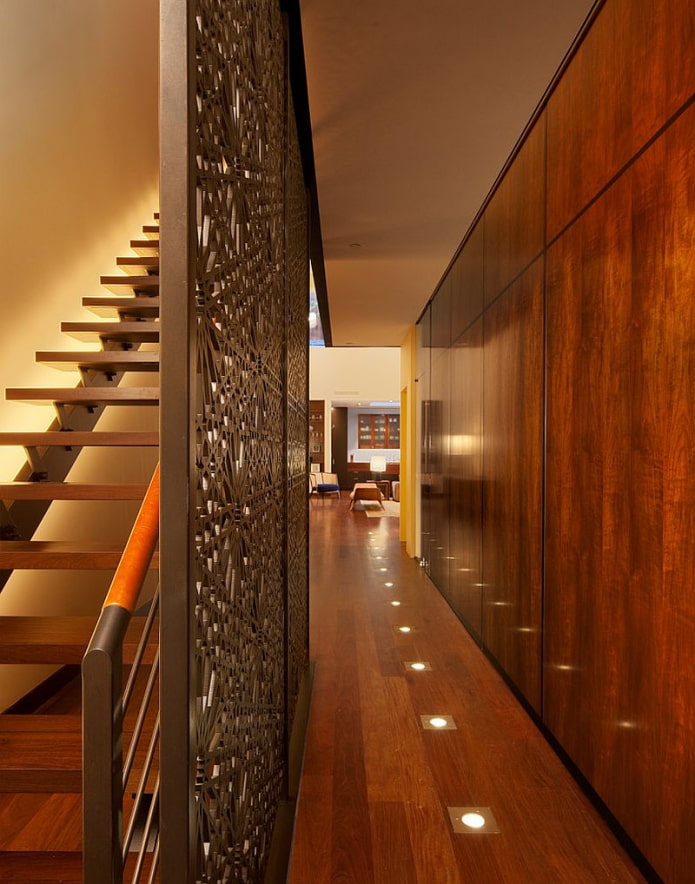
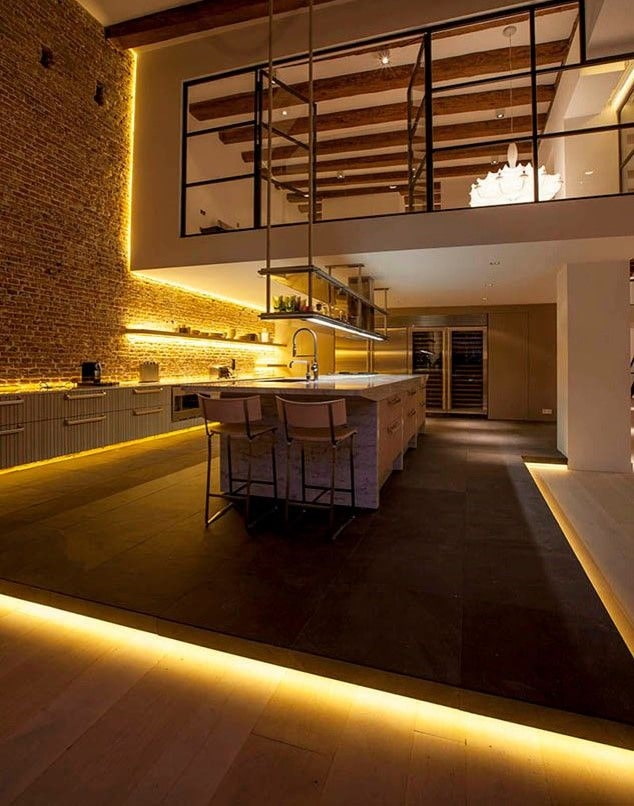
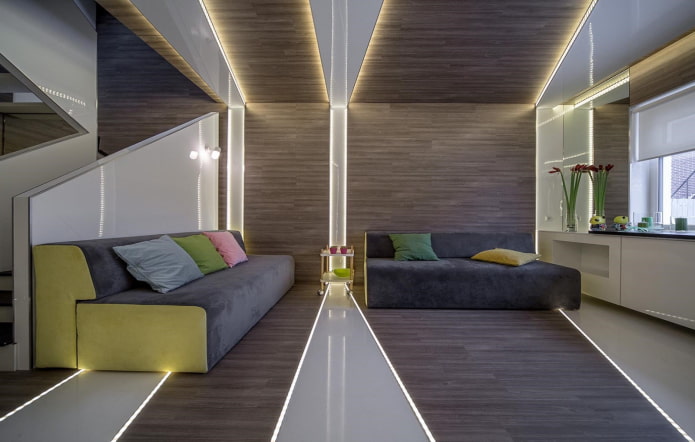
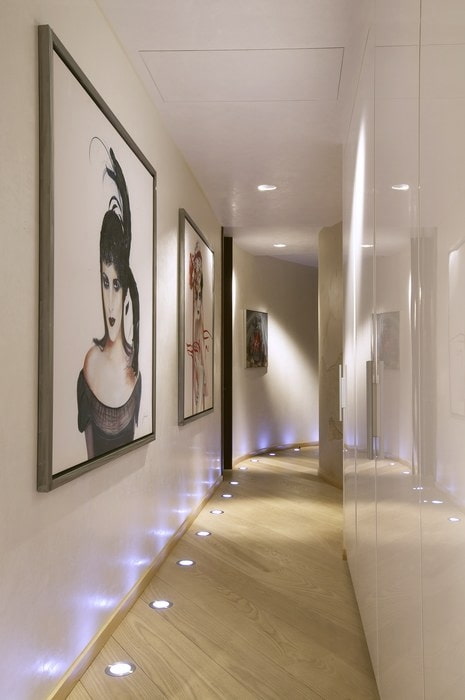
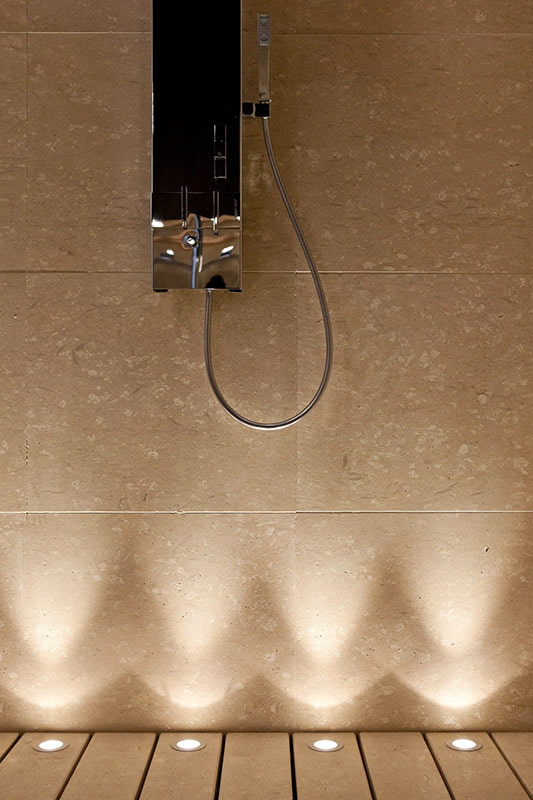
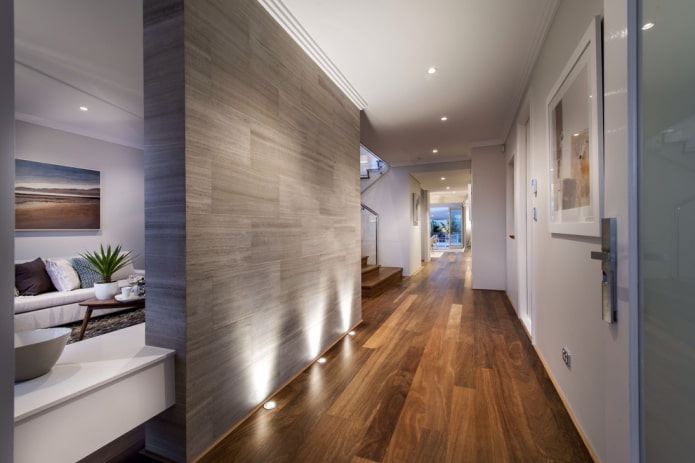
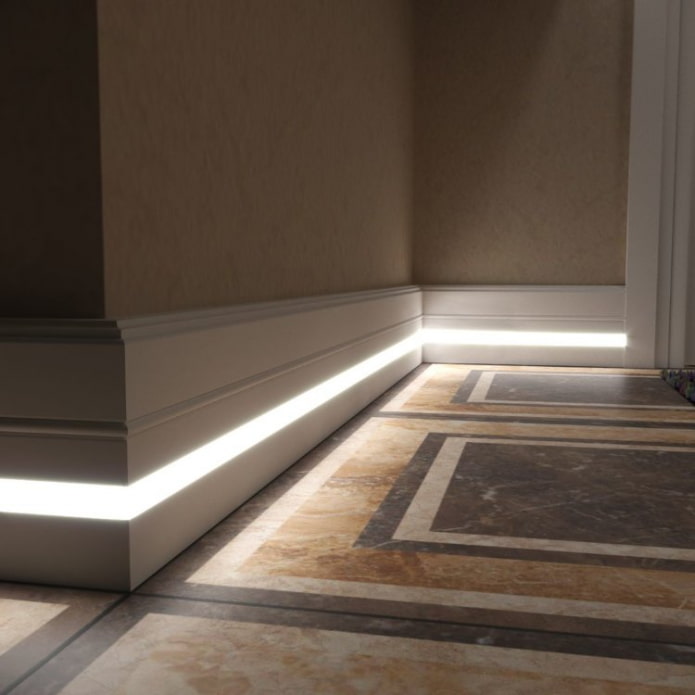
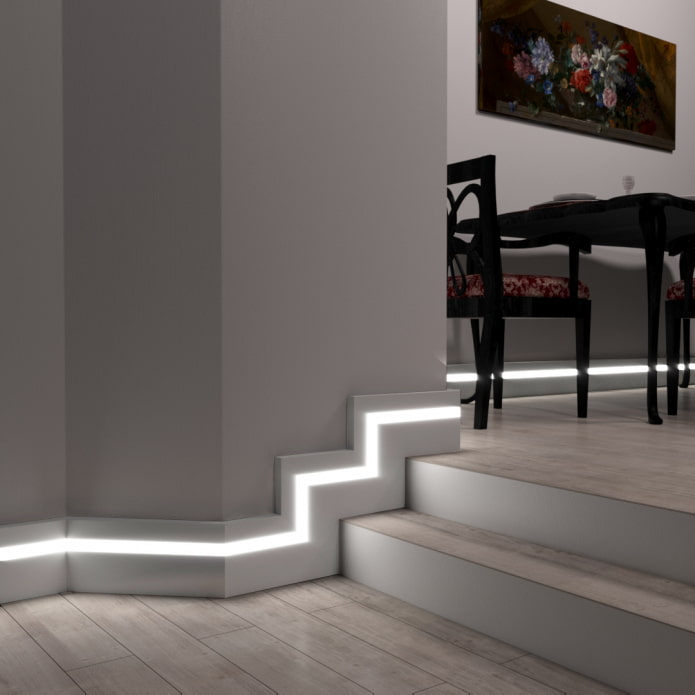
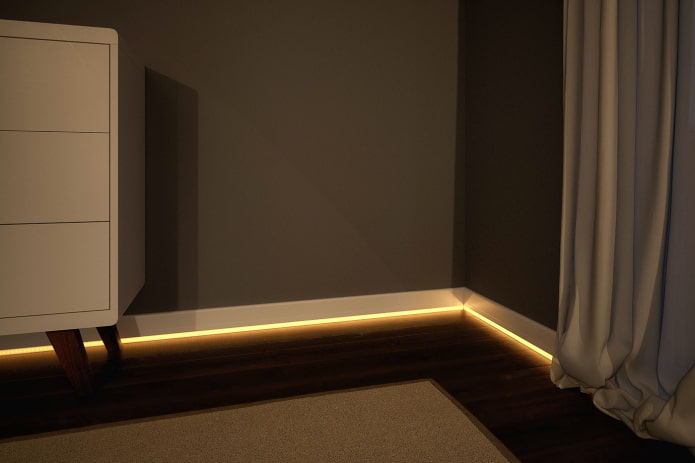
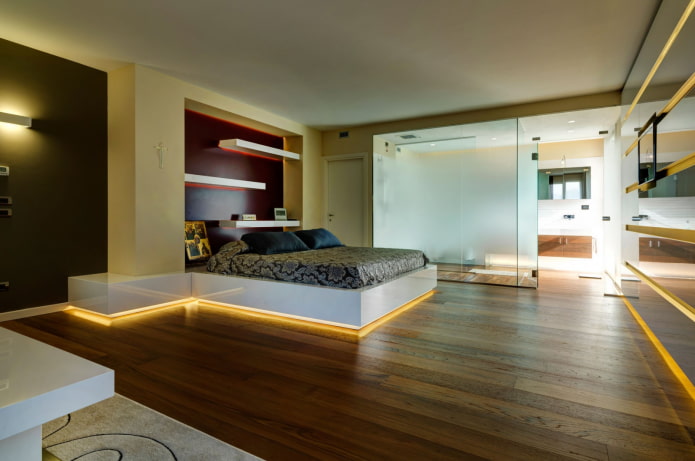
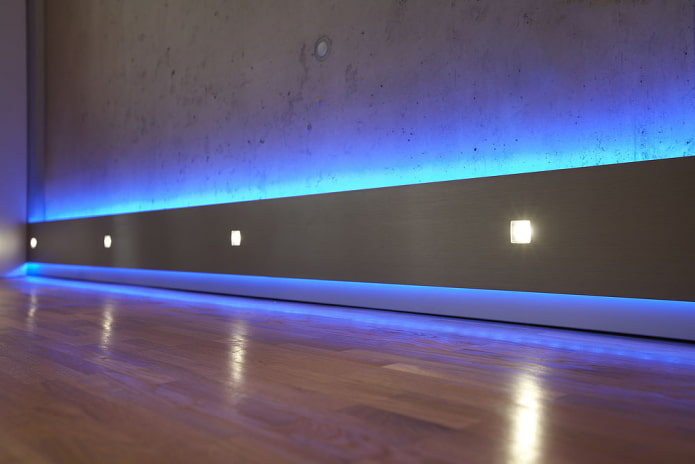
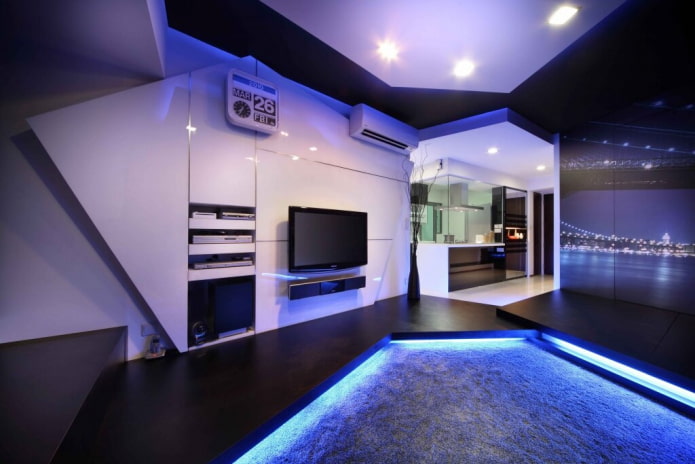
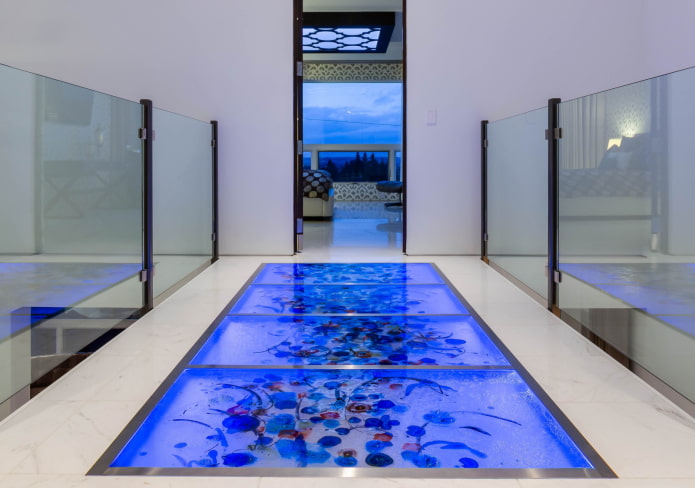
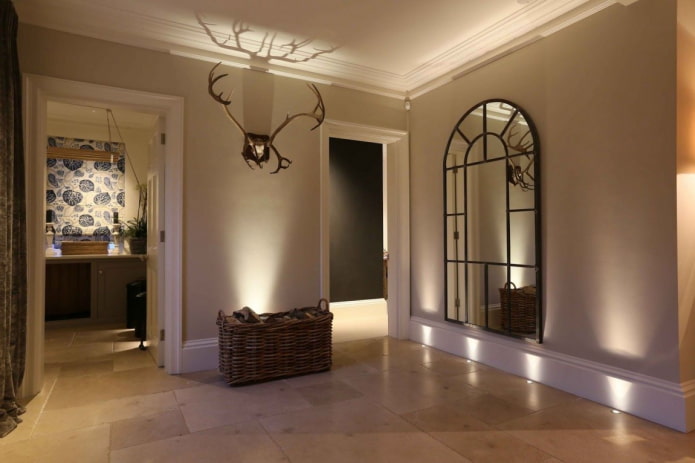
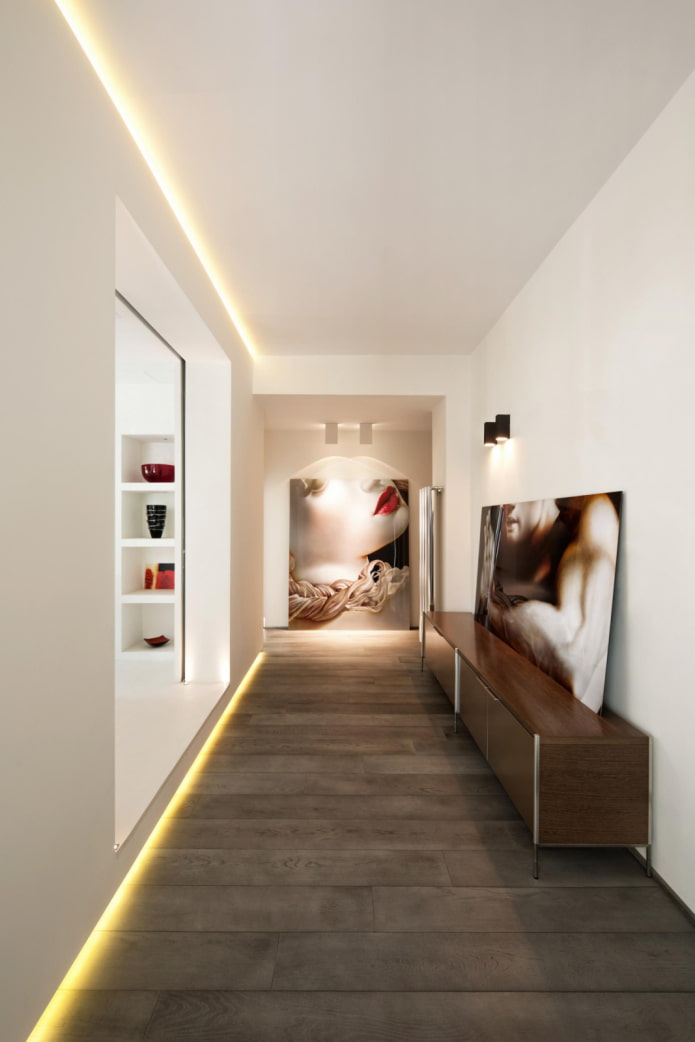
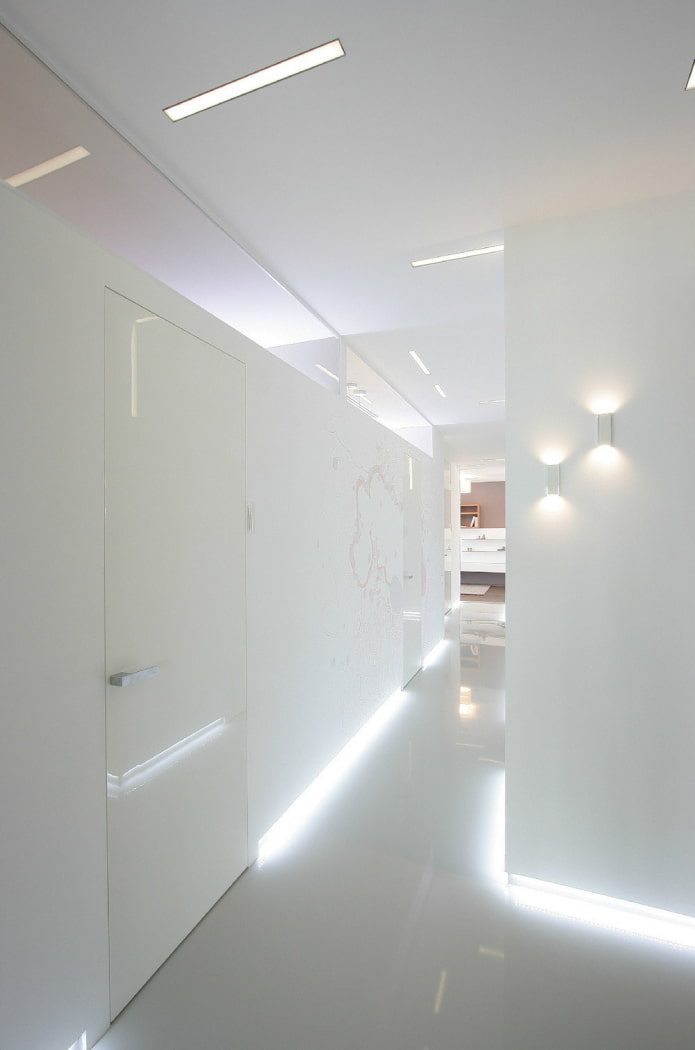
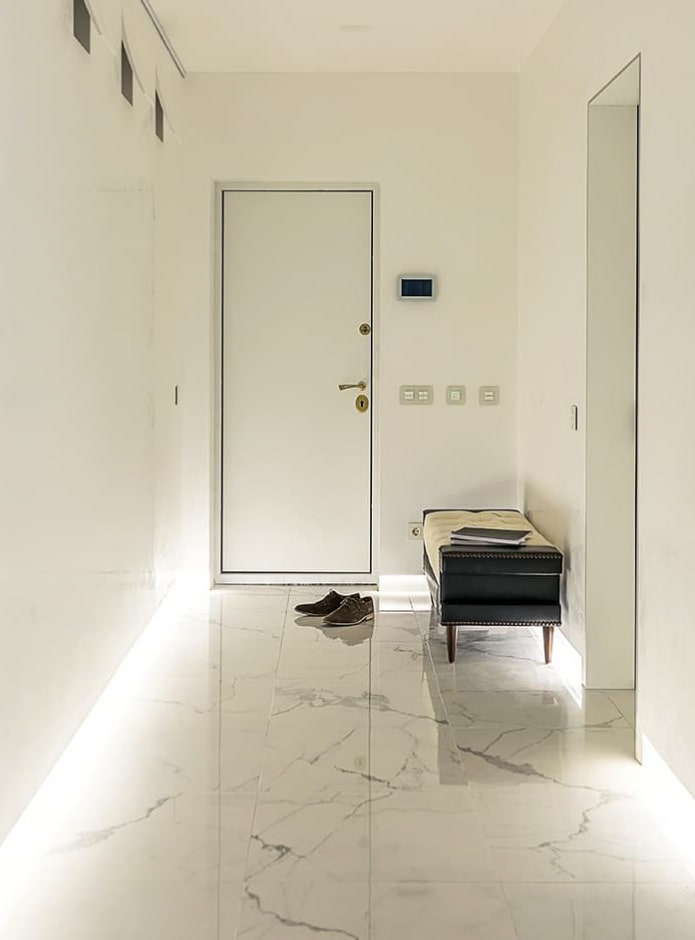
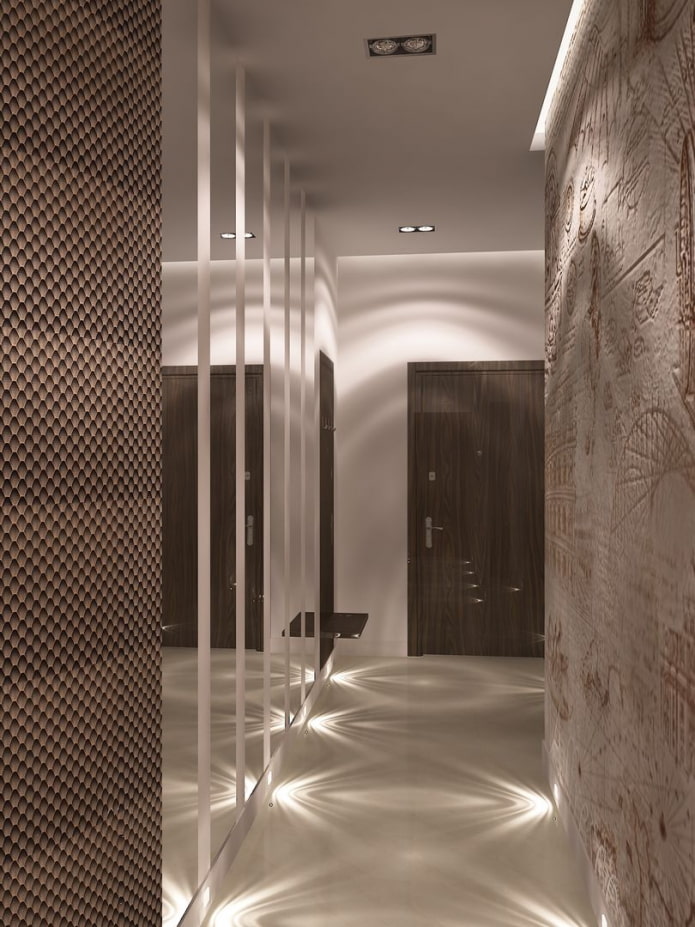
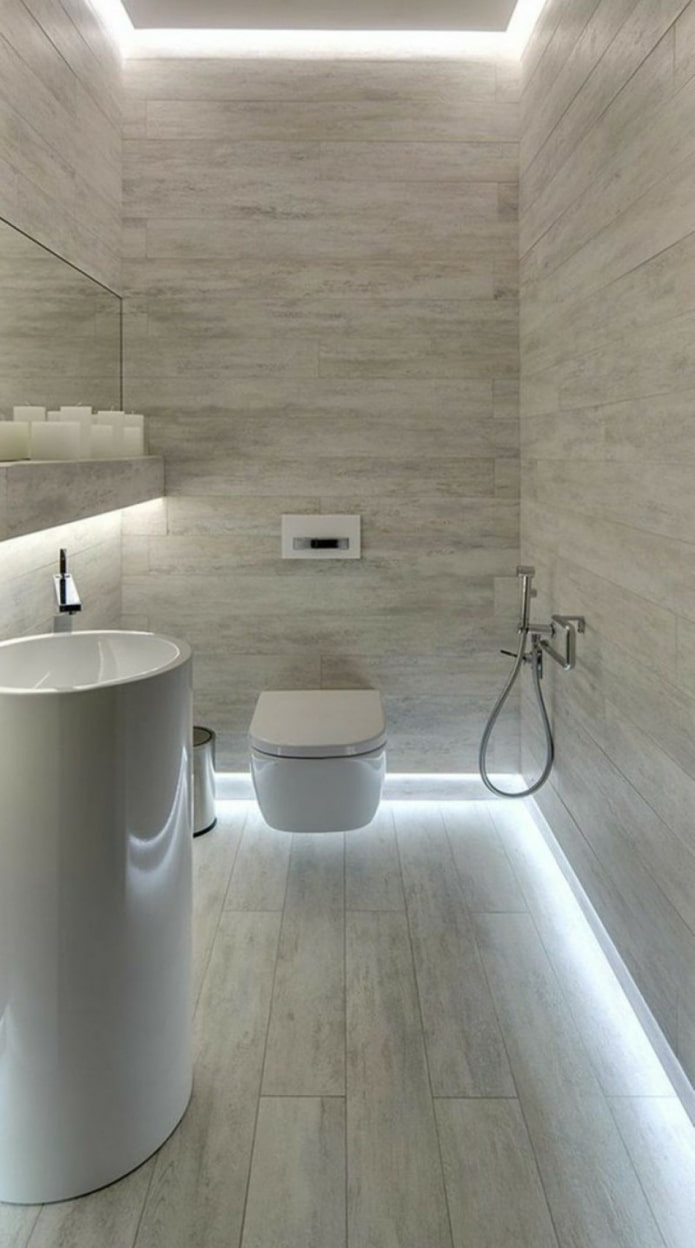
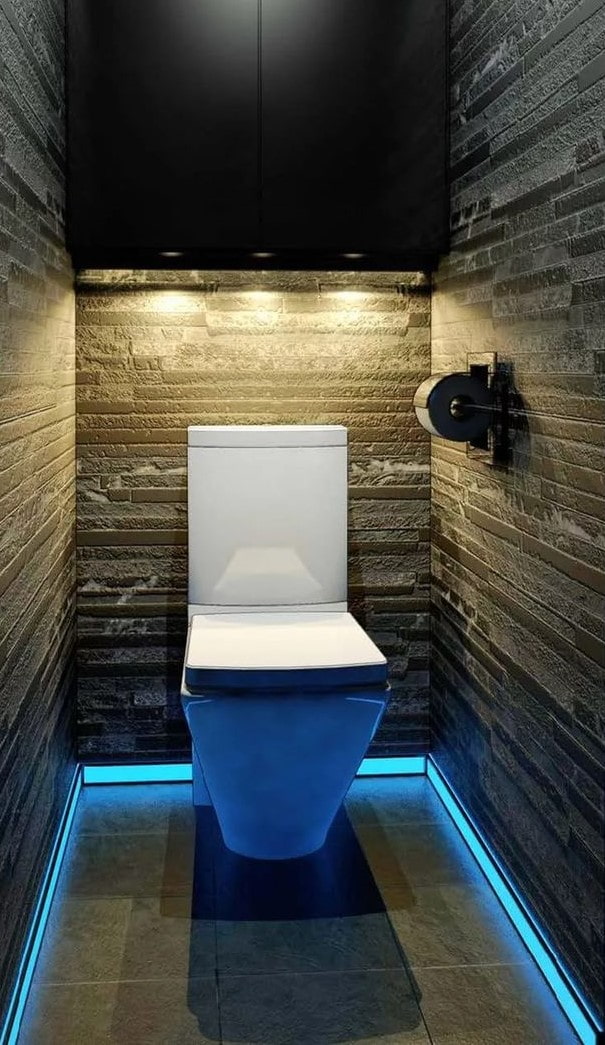
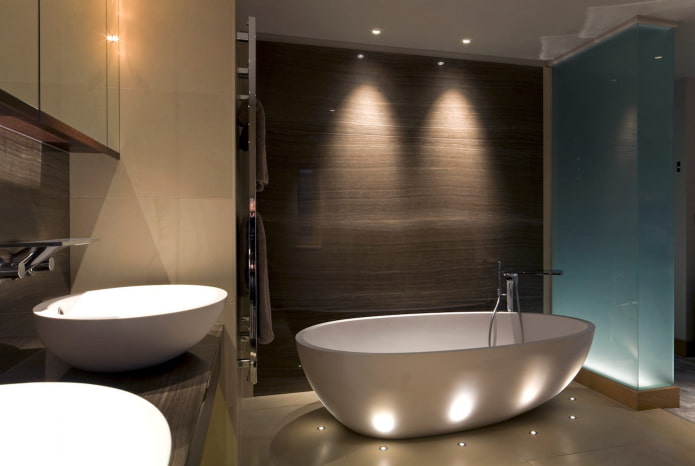
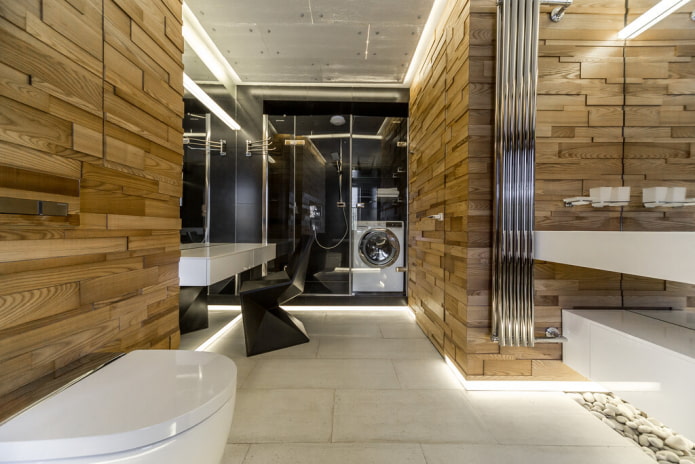
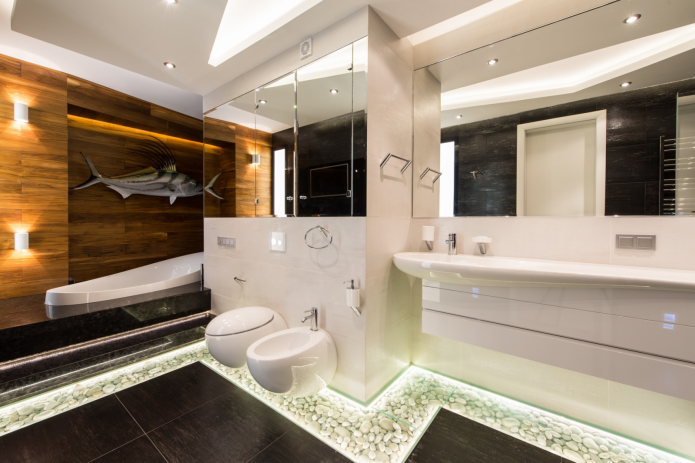
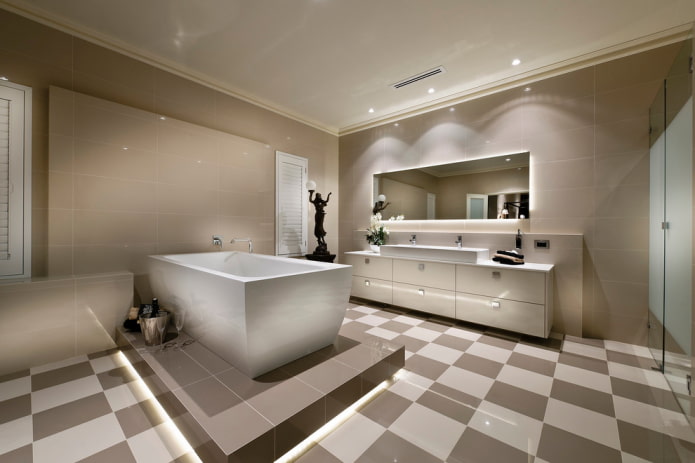
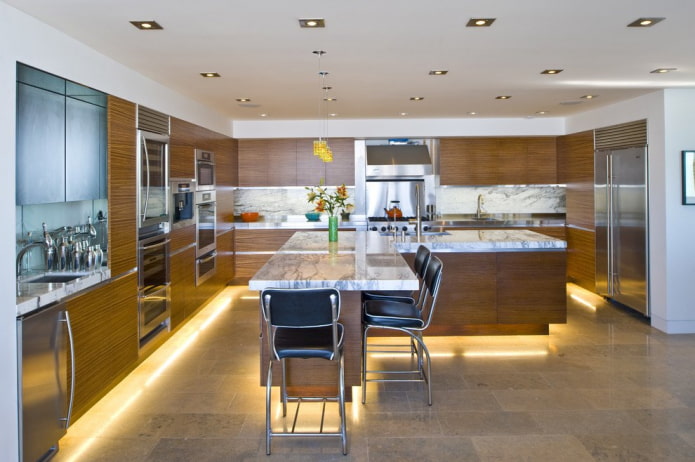
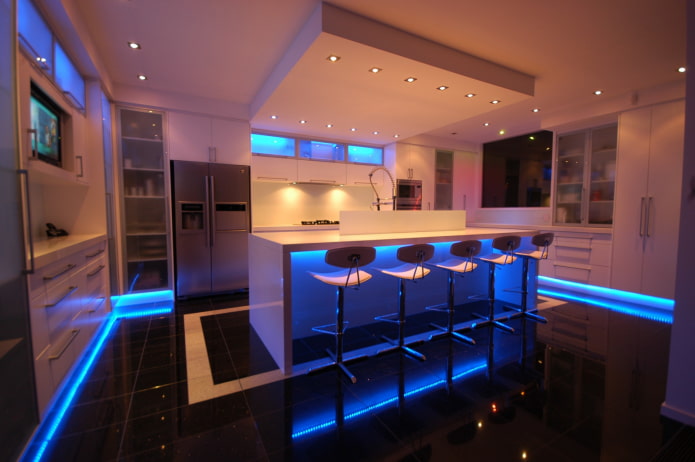
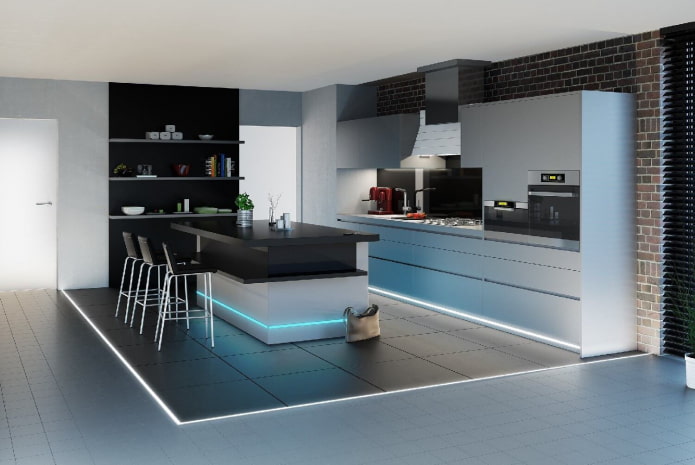
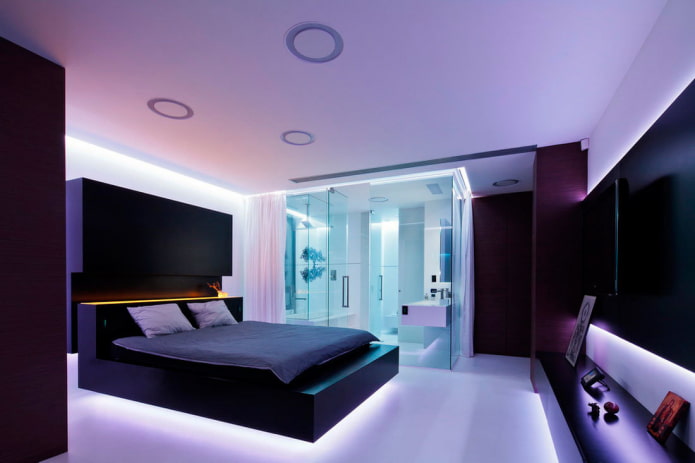

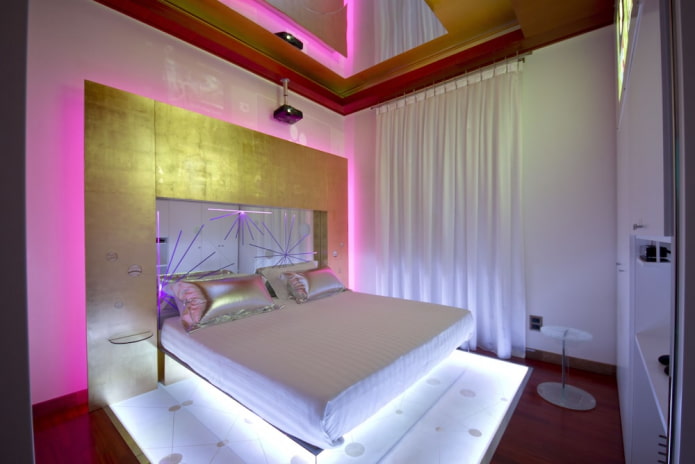
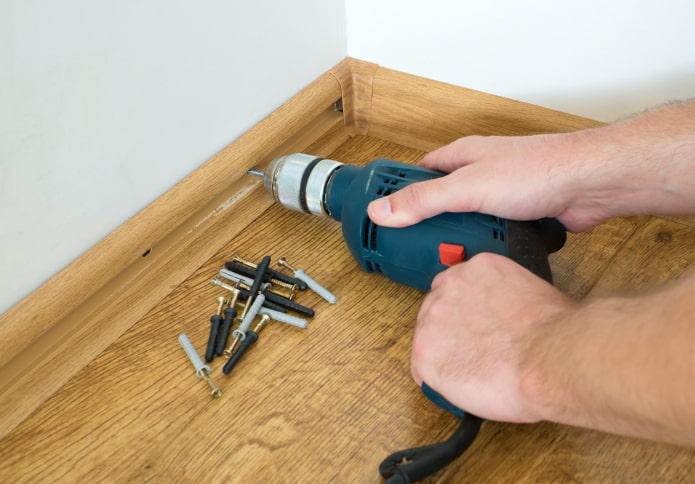
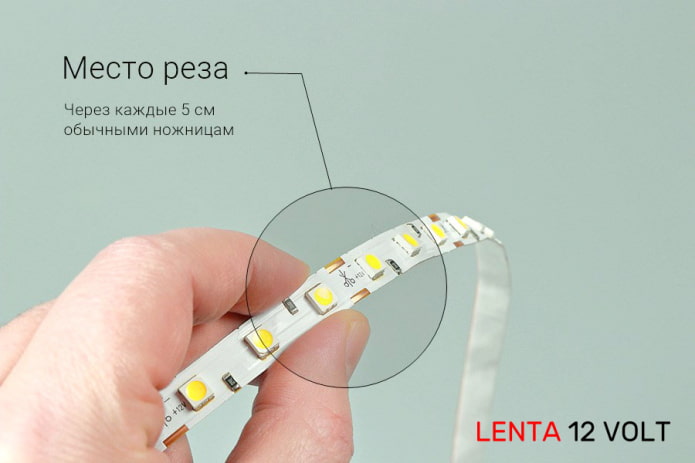
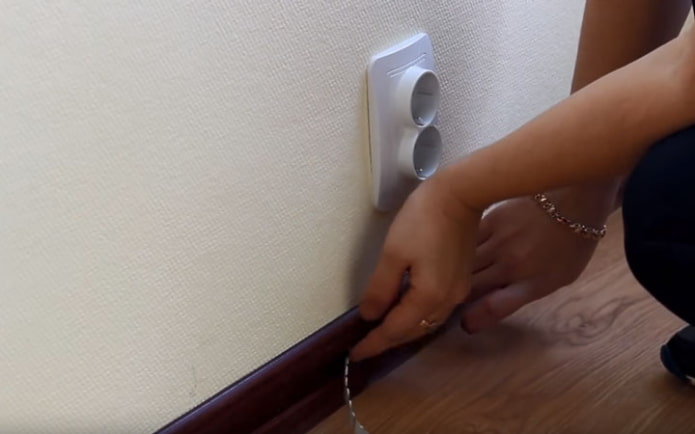
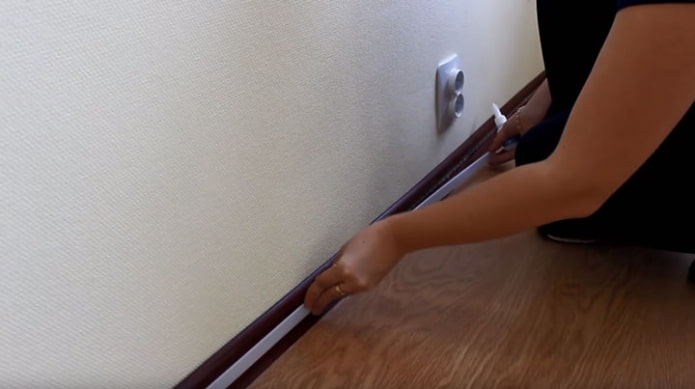
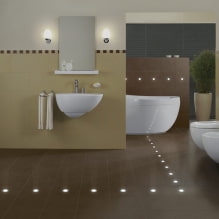
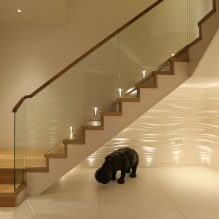

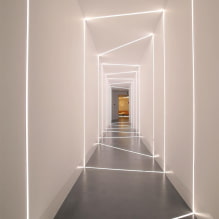
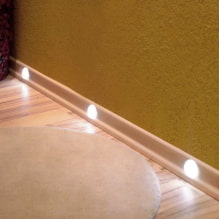
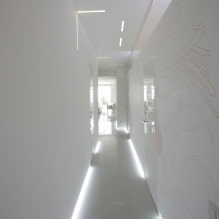
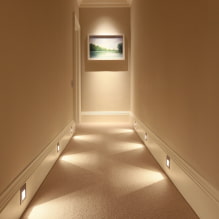
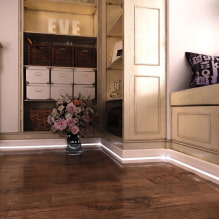
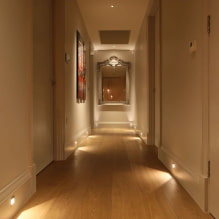


 Top 10 Trends in Interior Design 2020
Top 10 Trends in Interior Design 2020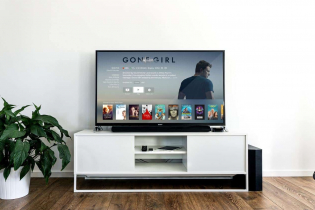 Rating of cheap TVs with Smart-TV
Rating of cheap TVs with Smart-TV New Year's LED garlands on AliExpress - we disassemble while it's hot, so that the house is bright
New Year's LED garlands on AliExpress - we disassemble while it's hot, so that the house is bright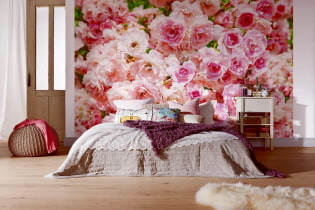 Wall mural with flowers in the interior: living wall decor in your apartment
Wall mural with flowers in the interior: living wall decor in your apartment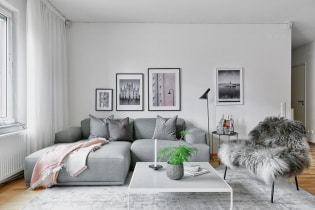 Gray sofa in the interior: views, photos, design, combination with wallpaper, curtains, decor
Gray sofa in the interior: views, photos, design, combination with wallpaper, curtains, decor Interior in peach tones: meaning, combination, choice of finishes, furniture, curtains and decor
Interior in peach tones: meaning, combination, choice of finishes, furniture, curtains and decor